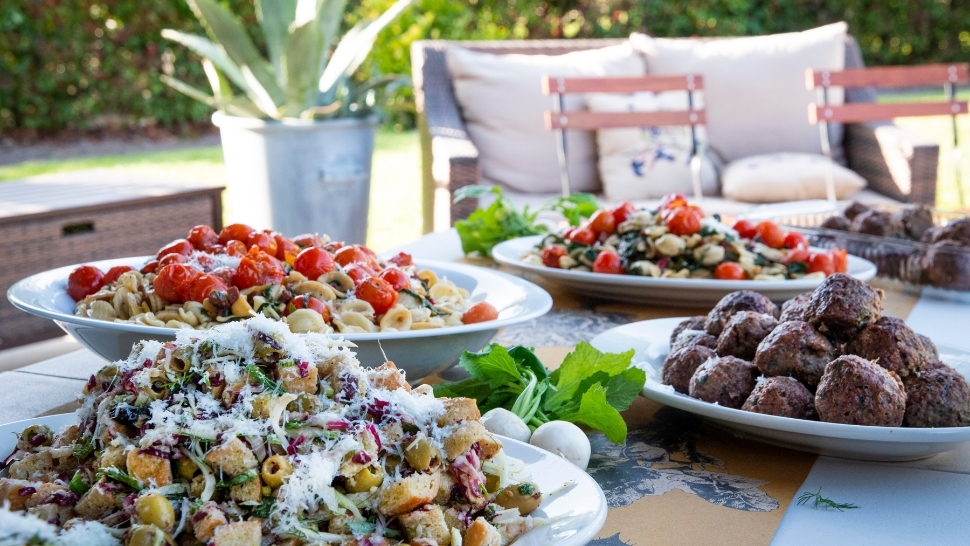
Consider giving your menus a healthier twist by putting plants first! You can still enjoy the comfort foods associated with the holidays while incorporating a more plant-forward approach.
How? Being plant-forward doesn’t mean you’re limited to only plants. Plant-forward refers to a style of cooking and eating that emphasizes and celebrates — but is not limited to — plant foods, focusing on craveable meals that support health and sustainability*. This means making plants the star of the meal and using animal protein for flavor and texture when needed. Think of the meat as an accompaniment.
Here are some easy ways to reimagine your next holiday meal.
TAKE A SIDE
Since sides are typically plant-centric, they lend themselves well to a plant-forward table. Some sides can stand alone as a main dish!
- Add umami. It’s our fifth taste and often what lends to the “craveability” of a food. Umami is frequently tied to meats but there are plant versions too. Seasonal plant-based umami favorites include dried mushrooms, roasted winter squash, toasted nuts, or dried tomatoes. Also consider a sprinkle of nutritional yeast on any plant-based food to amp up the yum factor!
- Make the sides hardy. Your plant-forward sides should be able to stand alone to create a balanced meal. This means including plant-based proteins such as those from beans, grains, nuts, and seeds, plus healthy fats to ensure a sense of satiety.
- Use simple swaps. Replace traditional dairy with plant-based substitutions (or a blend of cow’s milk/plant milk) in casseroles, use blended tofu instead of cream for a plant-forward dessert, and vegetable stock instead of chicken or beef.
GET GRINCHY WITH THE MEAT
Getting more plants on the table is only half of the plant-forward equation. There are also ways to reduce the amount of meat in your holiday meal.
- Serve plants first. Whether you serve food buffet or family style at the table, put plants out first. Guests will fill their plates (and their stomachs) with plants, leaving less room and desire for meat.
- Make mixed dishes. Instead of serving sliced meat, incorporate it into mixed dishes such as casseroles, lasagnas, shepherd’s pie, stuffed vegetables, or even frittatas.
- Flip the ratios. Focus on more plants and less meat. When making main courses, pack them with vegetables and use meat in smaller portions. Aim for two ounces per serving.
- Be non-traditional. No, we’re not talking tofurkey. Consider having a plant-based main meal after elegant appetizers such as oysters or mini–Beef Wellingtons.
- Have the best of both worlds. Let your family choose which traditional family recipe(s) are untouchable, but then try swapping the rest with potential new plant-forward favorites.
Here are a few inspirational menu ideas to reduce meat and make traditional plant-forward holiday favorites more robust and flavorful.
- Replace your traditional oven-roasted turkey with turkey pot pie, peppers filled with turkey and stuffing, or even sweet potato poutine with shaved turkey.
- Make cranberries more robust by replacing canned cranberries with a spinach cranberry salad with toasted nuts or a warm lentil-walnut cranberry side salad.
- Add protein to your potato sides by swapping maple-walnut glazed sweet potatoes for that sweet potato casserole with marshmallows or migrate to a nutrient-rich hasselback butternut squash with pecans.
- Forgo the traditional stuffing with sausage for a southern-style cornbread dressing.
- Lose the dairy in your pumpkin pie (or other pies) by using silken tofu to add the usual creamy texture or go all in and make a vegan pumpkin pie.
*Based on Menus of Change, a joint initiative of the Culinary Institute of America and Harvard T.H. Chan School of Public Health.